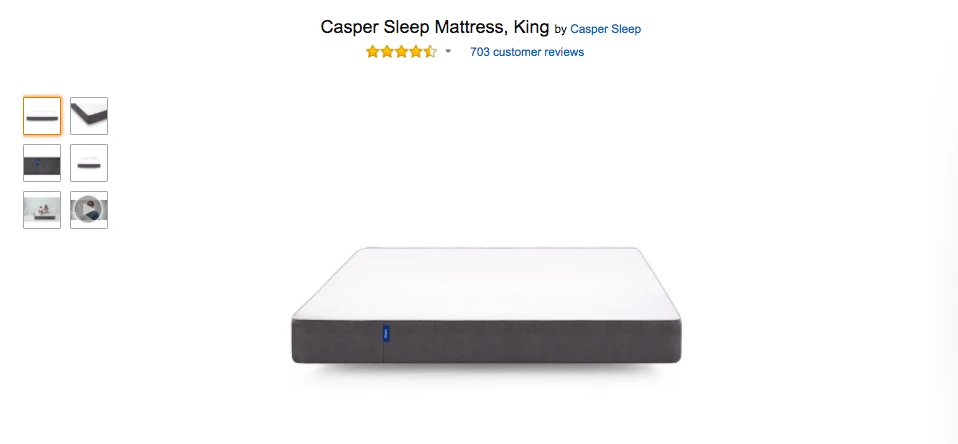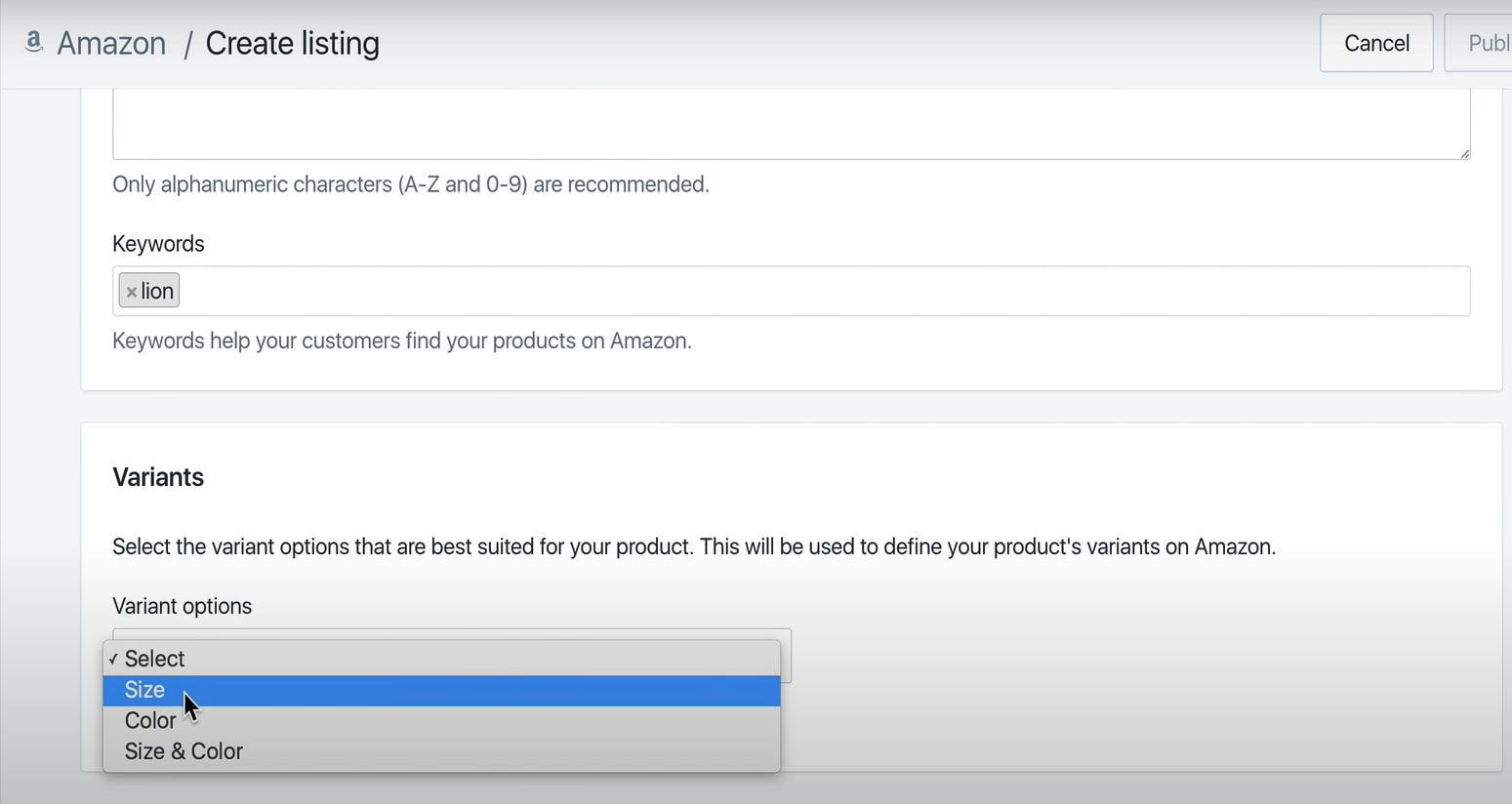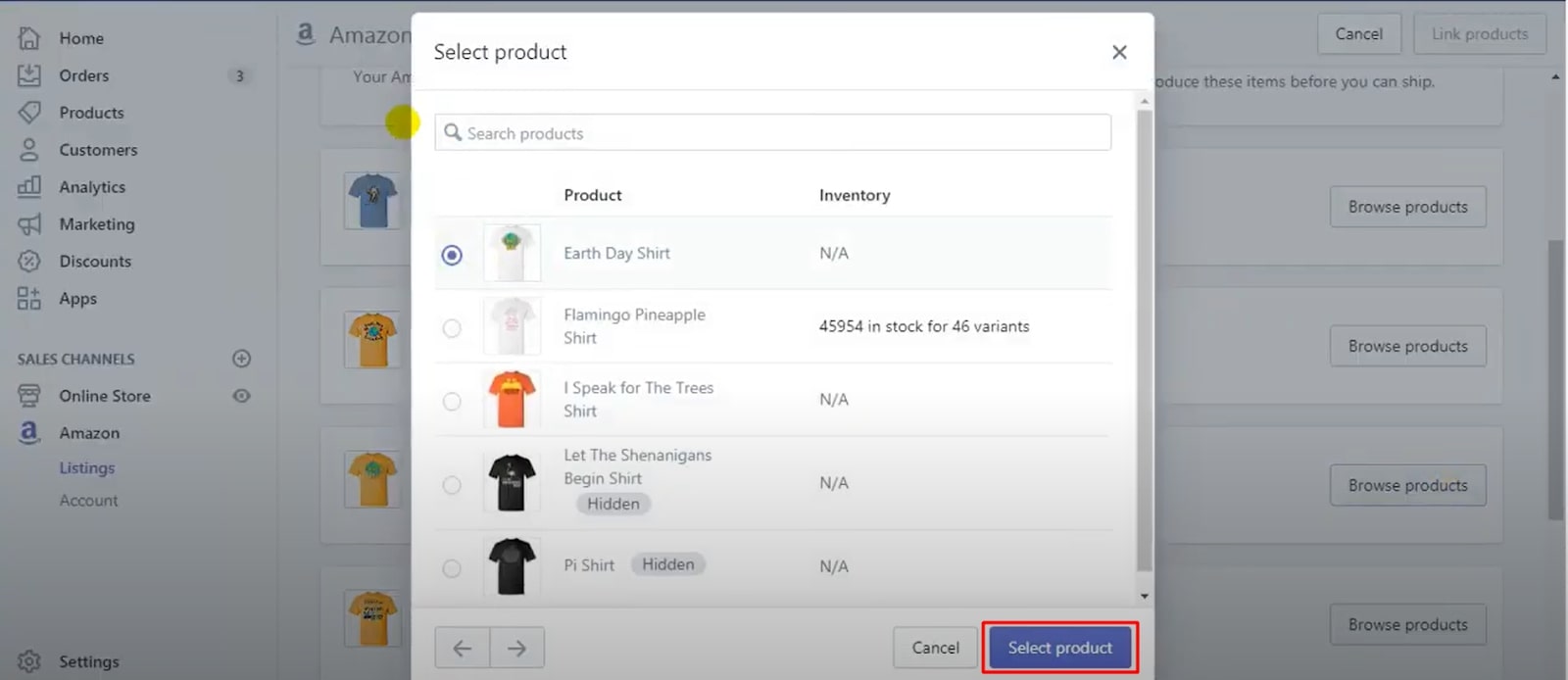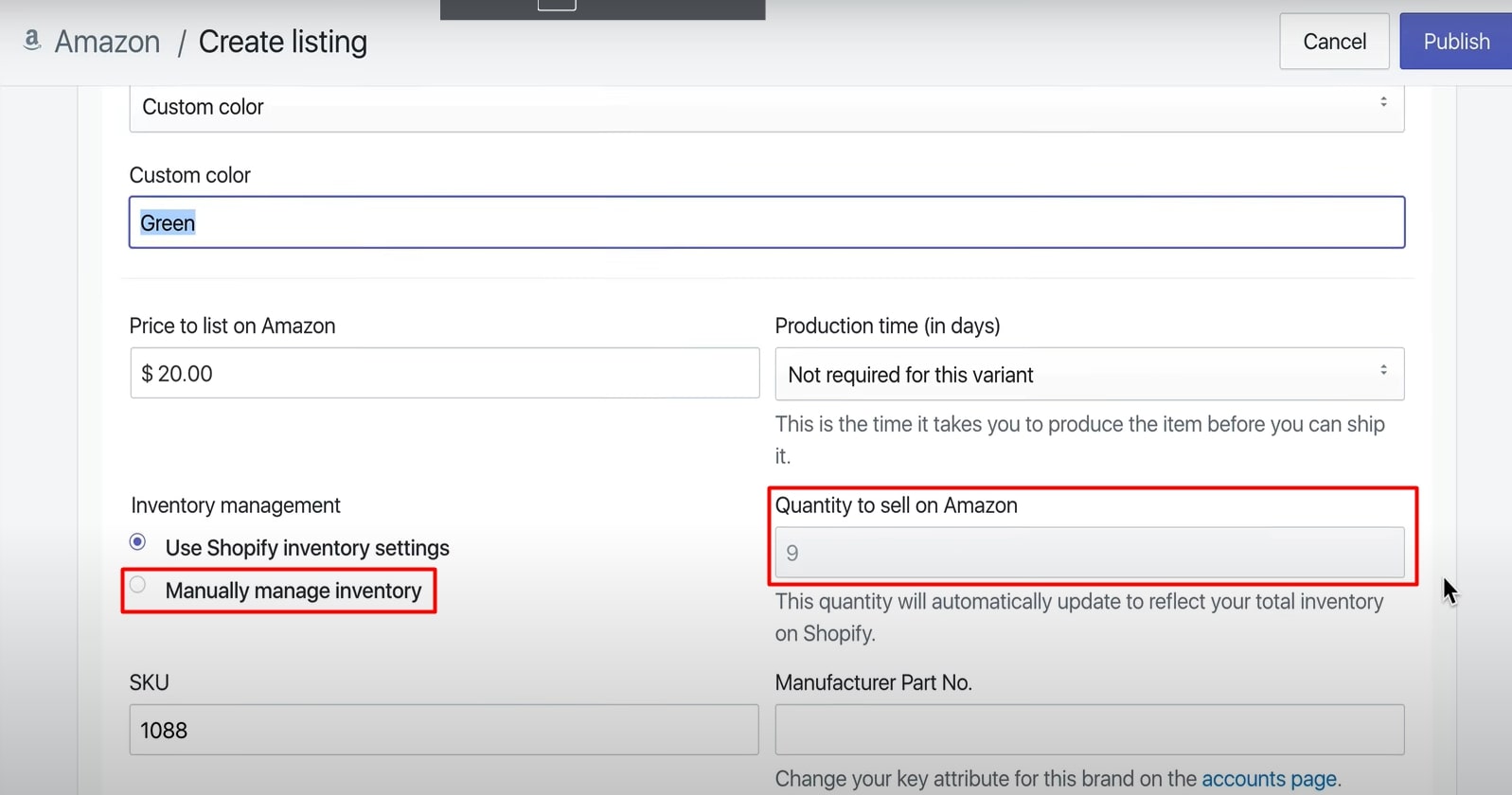How to Sell Shopify Products on Amazon
Your online shop is your home base, where you can promote your brand, engage with your audience, and eventually sell your items. Having said that, there are now several methods to reach and sell to existing and new audiences via Shopify channels.
In particular, Shopify’s new Amazon connection allows you to interact with potential consumers browsing on Amazon’s marketplace. You may establish Amazon listings, link existing Amazon listings, sync inventory, and fulfill orders with all of your items maintained in Shopify. For additional information on how to set up Shopify’s Amazon channel, follow this step-by-step tutorial and install the channel.
The combination of Shopify and Amazon is fantastic news for many companies, and it’s natural to have questions: Why should I sell on Amazon? How can I manage prices in my Shopify store and on Amazon? What does it take to build a long-term company on Amazon? What Amazon offerings and programs should I take advantage of?
I believe in long-term growth rather than wasting time on short-term hacks that may result in your account being suspended or deleted. I am certain that things can be completed promptly, which is very important in e-commerce while remaining within Amazon’s terms of service and standards. If this piques your curiosity, continue reading. In this post, I will walk you through the process of utilizing the award-winning capabilities of Shopify Amazon integration.
Why should you sell Shopify products on Amazon?
Shopify Amazon Integration was initially discussed in September 2015. This long-awaited connection with the world’s largest marketplace aims to link Shopify’s enormous merchant base with millions of prospective Amazon consumers, allowing them to swiftly improve their sales by accessing new massive audiences.
Using a multi-channel approach for your eCommerce business has been simpler. You can now integrate Amazon as a sales channel to your business, generate Amazon listings from existing goods, and fulfill orders straight from the Shopify admin panel.
In addition, Shopify will sync your available inventory across all current sales channels. You’ll receive a complete view of your business’s success by taking snapshots of your top stock-keeping units and shipping expenses across different channels.
But that is not all benefits that you can receive, there are 4 more main reasons why you should sell Shopify products on Amazon:
Amazon - where shoppers start their products search

According to a recent BloomReach survey, customers are twice as likely to begin their product research on Amazon than on Google.
Every day, millions of people visit Amazon, as we all know. Amazon algorithms assist you in increasing organic traffic while requiring little marketing skills. The earlier you begin, the more traffic you will generate. Customers will look for your goods on Amazon whether you sell on its marketplace or not as long as this trend continues. Even if they locate a product, they like directly on a retailer’s website, nearly 9 out of 10 buyers visit Amazon.
I’ve seen hundreds of cases where selling on Amazon resulted in increased traffic to branded sites. We’ve all done it: right before buying anything, we whip out our phones to read the Amazon reviews.
A fantastic extra sales channel
Sellers prefer multi-channel selling versus individual storefronts. What is multi-channel selling? It is the practice of selling your items online through various channels. This has recently become more prevalent while traditional thinking holds that you should focus entirely on a “direct” relationship with your client and reduce your reliance on merchants for the majority of your earnings.
As previously said, Amazon is a wonderful sales channel to use in addition to your own Shopify site. The common fear is that Amazon will eat all of your sales, but the truth is that you can frequently maintain a thriving branded website in addition to Amazon. If done right, Amazon may rapidly become a valuable addition to your Shopify business.
Assist shoppers in discovering your brand
Amazon can assist in the development of a sales funnel of potential clients who will eventually purchase on your branded site. Many successful companies began on Amazon and eventually convinced people to buy the same or similar goods on their own websites.
Casper Mattress, for example, has positive ratings on Amazon but nearly 9 times as many on their own website. The favorable Amazon evaluations provide Casper with high credibility for people considering purchasing on Casper’s site, and it also assists Amazon buyers in discovering Casper’s recommended products. Furthermore, Casper.com offers a number of value-added services that might entice clients away from Amazon.


A public marketplace
If you do not build an Amazon listing for your brand, be prepared for a third-party seller to do so.
Should you put your brand’s content, price, and consumer interactions in the hands of an unknown third party? Most of you, I’m sure, are shaking your heads in disbelief, and with good cause. Customer complaints, for example, regarding a Shark Tank product being offered by a third-party seller with no relation to the company, and with a list price over three times the price on the brand’s shop, are shown below.
Requirements to sell Shopify products on Amazon
Before we begin, let’s take a look at the most critical issues that require your attention.
- First and foremost, you must have a Shopify store. To begin, go to the Shopify website and input your email address. Make your store stand out by placing your items in the appropriate categories.
- As you may be aware, there are two kinds of accounts: personal seller accounts and professional seller accounts. Make sure you have a professional selling account on Amazon because it costs less than a personal seller account.
- To proceed with Shopify Amazon integration, make sure you have not selected FBA for shipping your items.
- Your Shopify currency should match the currency of your Amazon store. That implies if you want to sell on Amazon.com, you must have a Shopify US store.
- You must have your UPCs for all of the items you offer on hand for a smooth Amazon Shopify connection. Additionally, the stock levels on Shopify should reflect the correct values.
- Your return policy is at least as excellent as, if not better than, Amazon’s.
- You have a Shopify plan that is active.
How to sell Shopify products on Amazon?
Step 1: Verify the Category approval
After you’ve checked the requirement above, you’ll need to gain Amazon’s approval that your items match the categories. Visit this page to determine whether your items require clearance. Additional payments, performance evaluations, and other criteria may be required as part of the approval procedure.
Approval is required for the following categories and products:
- Holiday Selling Requirements in Toys & Games
- Amazon Watch Warranty FAQs
- Made in Italy
- Video, DVD, & Blu-ray
- Collectible Coins
- Streaming Media Players
- Personal Safety and Household products
Step 2: Make Amazon a Sales Channel
Merchants on Shopify may add the Amazon sales channel via the App store or activate it straight from the Shopify admin. The steps for adding an Amazon selling channel to Shopify Admin are shown below.
- Log in to your Shopify admin account and click the ‘+’ button next to the SALE CHANNELS header.
- Visit to learn more about the sales channel, go to Amazon.
- Select the Add channel option

- Click Connect to Amazon on the Amazon account page.
- Follow the on-screen steps to sync your Shopify and Amazon Seller Central accounts. When the procedure is finished, you will be returned to your Shopify admin. Confirm developer access for Shopify in the User Permissions section of your Amazon Seller Central account.
Merchants may now connect an Amazon sales channel to their iPhone or Android smartphone.
Step 3: Build up Amazon listings
Because your Shopify items are not instantly featured on Amazon when you activate the Amazon sales channel, you have three options for getting started selling on the Amazon sales channel.
Create and manage Amazon listings if the product you offer is new on Amazon
- Go to Amazon after logging in as a Shopify admin.
- Choose to Create a listing.
- Tap Select product after selecting the product from your Shopify list that you wish to sell on Amazon.
- Select Create a listing from the Search page.
- On the category list, look for the category that corresponds to your product.
- Fill up the Amazon listing data to avoid affecting the Shopify content.
- Then, under the Variants section, pick the product choices that apply to your product

- Select Inventory Management options, provide a production time if needed, and then select an image for your variation.
- When the procedure is finished, click Publish.
Create an offer for your goods if it is the same as the one offered on Amazon
- Go to Amazon after logging into Shopify admin.
- Select Create a listing.
- Choose to Select a product to display a product from your Shopify list on Amazon.
- Press Find Product on the Search screen to look for a product on Amazon that matches the one you’ve provided, then tap Select.
- On the Edit listing page, you may add a specific variant to your offer or choose the Don’t offer variant option from the SHOPIFY VARIANTS dropdown list.
- Set up inventory after entering the list price for each version.
- When the procedure is finished, click Publish.
Alternatively, if the goods you supply are sold on Amazon, you may connect Shopify to your current Amazon listings. Take the following steps:
- Go to Amazon after logging into Shopify admin
- Each linkable good recognized by the Amazon sales channel will have a banner. Because the Amazon sales channel does not accept Fulfillment by Amazon (FBA) offerings, FBA-fulfilled items cannot be linked to your Shopify products. Link items may be found on the Listings page
- Tap the Browse products button next to the product that you want to link to your Shopify product

- A product selection dialog will display. Then check the box next to the product you wish to link, and then tap Select product.

- Select the method you wish to use to manage inventories for the goods you’re connecting.
- If appropriate, enter the production time. If you choose Not needed for these goods, the manufacturing time is set to 2 days by default. Fill in the number of days when linking the product if you need additional time to prepare or create the item before shipment. This will have no effect on the production time on Amazon Seller Central.
- Select the variation to which you wish to link your Amazon listing.
- To link your current Amazon listing to your Shopify goods, choose Link items.
Step 4: Manage inventory settings
Every Amazon consumer who views your listings or offers will be able to see the availability of inventory amounts for each variety.
When it comes to inventory settings administration, you have two options. You may use the inventory tracking settings to sync your product inventory on Amazon, or you can manually control the inventory quantity.
Sync Amazon inventory
If you select the Use Shopify inventory settings option, the system will automatically sync your Shopify product inventory to Amazon, depending on the product’s inventory policy.

- Shopify records this product’s inventory: If you don’t allow consumers to buy a certain product when it’s out of supply, this option will allow Shopify to automatically update the Amazon listing to reflect the product’s inventory on Shopify. Though you enable consumers to buy a product even if it is out of stock, Amazon’s inventory is automatically adjusted to 100. Please keep in mind that Shopify will not display this data
- Don’t keep track of inventory: By default, the inventory is set to 100. This number is only found on Amazon.
Amazon does not allow infinite or negative inventory quantities. As a result, the 100 serves as a placeholder to assure the availability and visibility of listings on Amazon. When clients purchase items, the number of available products may decrease. This number, however, is automatically reset to 100 every 10 minutes.
Manually manage inventory
Amazon allows you to manage your inventory manually. Amazon’s fixed amount of inventory quantities sold is kept distinct from Shopify’s. As a result, when a product sells on Amazon, the quantity drops on Amazon and on the Amazon listing details page, but not on Shopify. You may check and adjust the number of sellable goods at any moment using this option. To manage manually, follow these two procedures.
- When creating or updating a listing, select the Manually manage inventory option.
- Fill in the Quantity you want to sell on Amazon.

Step 5: Fulfill Amazon orders
You can keep track of all Amazon orders in the Shopify admin’s Orders area. These orders will be marked as such by Amazon. Fulfilling Amazon orders on Shopify admin will immediately change the status of the orders with the same fulfillment date on both Shopify and Amazon Seller Central. When processing Amazon orders in Shopify, make sure to adhere to Amazon’s Selling Policies and mark orders as completed in Shopify within Amazon’s deadlines.
While Amazon will solely send order alerts to customers, merchants will receive notifications from both Amazon and Shopify.
Please keep in mind that Amazon sales channel orders cannot be integrated with FBA. As a result, you must manually fulfill orders in your Shopify admin.
Things you need to know about Shopify Amazon Sales Channel
Two brains are better than one, and this is absolutely true when Shopify and Amazon collaborate. Using the Shopify Amazon sales channel is an excellent method to create sales for your eCommerce store. Therefore, it is better for you to take into consideration these things about Shopify Amazon Sales Channel.
Track Amazon inventory with Shopify
Shopify allows you to effortlessly track your company’s inventory on Amazon. This is a critical tool to manage, especially if you observe an increase in sales. Inventory tracking is closely related to your capacity to generate and maintain sales. As a consequence, tracking your store inventory will offer you fresh information that you can utilize to your benefit.
Do not sell out-of-stock items
Don’t be an eCommerce brand that annoys customers in order to increase sales on Amazon. Nothing irritates an Amazon consumer more than seeing a product they want to buy advertising, then clicking to discover it is out of stock. This affects your brand’s visibility on Amazon, resulting in lost purchases.
One thing to keep in mind is that Amazon will only show an in-stock product with a maximum of 100 units. As a result, if you have allowed Shopify to track inventory, the platform will notify Amazon of how many units remain. You avoid inventory problems, be sure to maintain your inventory with a fine-toothed comb.
Amazon transactions in real-time go directly to Shopify
Using the Shopify Amazon Sales Channel, you will be able to receive real-time Amazon transactions that will be filtered into your Shopify dashboard. This is important if you want to improve sales or learn about Amazon sales patterns. The sorts of customers that buy via Amazon differ from those who buy directly from your website.
Amazon orders fulfilled by Shopify
Orders may be completed by ensuring that they reach your consumers via the Shopify interface. You won’t have to worry about losing or forgetting paid-for orders since your dashboard will keep track of those that need to be filled.
Revenue reports created by Shopify
It is critical to producing income statistics for your Amazon sales channel on a daily, weekly, or monthly basis. Retailers must understand how consumers buy and how much money is created.
According to Inc. Magazine, one out of every four American adults has Amazon Prime. When you use the Amazon sales channel, your chances of reaching these consumers skyrocket.
Analyze your revenue reports using your Amazon dashboard. Examine these statistics carefully to determine which days are ideal for you to sell and which goods Amazon customers like to buy. After receiving your Amazon sales and income statistics, you may discover that your early opinions on revenue drivers have shifted.
Maintain good reviews
It is not always feasible to receive 100 percent positive feedback. A few mediocre or critical points of view will undoubtedly make their way into the mix.
However, it is critical to have positive or well-received evaluations sprinkled throughout your listings. Because of consumer trust, the more good and authentic reviews you have, the more money you will make in your Shopify Amazon sales channel.
Use Shopify to list your products in the appropriate Amazon categories
Buyers are irritated when items are listed in the wrong category. As a result, sales will suffer.
If you’re selling men’s or women’s clothing, make sure your ads are in the Clothing & Accessories category. Alternatively, if our eCommerce business sells kitchen knives, your items should be placed in the Home & Kitchen category.
When entering items into the right Amazon categories, retailers must be meticulous. This is especially true if your eCommerce business is rapidly expanding and you need to introduce more goods.
Notifications are delivered on both platforms
Customers who buy items from you will interact directly with Amazon, and you will handle all of the backend fulfillment. Both Amazon and Shopify provide seller alerts to help you keep organized. This tool is essential for staying on top of orders, especially if your Amazon sales channel is overflowing with them.
Add UPCs
- Finally, in order to establish product pages in your Amazon sales channel, you will need to enter UPCs (Universal Product Codes). UPCs are purchased in groups of ten. UPCs are not necessary for brands that have directly registered with Amazon. If you have a Professional Seller account, you must have UPCs on your product pages.
- Last but not at least, to finish your Shopify Amazon sales channel, use the following final checklist:
- To appear professional to customers, make sure your Amazon name matches your Shopify store name.
- Keep all of your company information on hand, such as tax identity and sales tax information.
- Maintain an SEO and marketing budget.
- To keep on top of client purchases and orders, set Shopify Amazon sales email notifications to arrive as priority emails.
- To appeal to a wide spectrum of Amazon customers, provide a selection of SKUs for Amazon shoppers.
- Create attention-grabbing product descriptions.
- Keep Amazon product names short and sweet; lengthy titles will lose Amazon consumers’ interest.
- Assign all of your listings to categories in a separate Word document to save time when entering listings into the Shopify admin section.
- To diversify your eCommerce income, arm yourself with vital knowledge regarding the Shopify Amazon sales channel.
Final thought
At first sight, Amazon may appear to be a threat to your company: a worldwide marketplace, a large audience, and a go-to site for consumer search. When addressed correctly, Amazon, on the other hand, may really help your brand take off. Listing optimization may assist you in being noticed by a worldwide audience and opening up new markets. In-Amazon marketing may propel your brand to the top of the competition, putting you in the spotlight in front of a highly qualified audience.
Your online business serves as your home base, and Amazon provides you with the potential to reach a large new audience. Strategic preparation, testing, and a little effort will go you a long way toward selling effectively on Amazon.
Use Shopify’s step-by-step tutorial to set up your new Amazon sales channel, and refer to it when you debut your items on Amazon. As Shopify and Amazon collaborate more closely on this connection, more categories and functionality will be made available to Shopify users. Keep checking back here and on the Shopify blog for updates on the Amazon channel.





